Nordstrom Local expands its innovative, inventory-free retail hubs
Go where the customer is: Nordstrom brings its revolutionary Local service emporiums to more Los Angeles neighborhoods and soon, New York City.

[Photo: courtesy of Nordstrom]
What if your favorite fashion destination was also your local tailor, manicurist, bartender, juicer, cobbler, stylist—and even your WeWork?
That’s the essential idea behind Nordstrom Local, the innovative “service hub” the retail giant launched last October in Los Angeles. The 3,000-square-foot atelier-like space alongside millennial catnip boutiques like Glossier and Marc Jacobs on West Hollywood’s bustling Melrose Avenue combines a medley of Nordstrom’s popular amenities under one chic roof.
“We aim to bring the convenience and accessibility of our some of the most popular or highly demanded services right to the neighborhoods where our customers live and work,” Shea Jensen, Nordstrom senior vice president of customer experience, tells Fast Company. “We’ve heard loud and clear from our customers that drivability is a factor.”
The only thing missing is inventory—but that’s by design. In lieu of stocked shelves, clients begin this revolutionary shopping experience well ahead–either at home or on their mobile phone. Customers come here to pick up their online orders.
So far, customers have responded positively, so much so that today, Nordstrom Local is announcing two more locations in Los Angeles: A 1,200-square-foot space in Brentwood, and a 2,200-square-foot store in Downtown. And there are plans to expand to New York City. Each location’s decor and services will be personalized to neighborhood needs and tastes.
Los Angeles is Nordstrom’s largest market with 16 full-line stores and 4 million customers, and with its mass inventory, an ideal expansion ground, says Ken Worzel, Nordstrom’s chief digital officer and president of Nordstrom.com.
“We’ve got a young customer base that’s very engaged with our brand,” says Worzel. “One of the clear messages we’ve gotten is people love our brand when we’re able to bring the combination of highly relevant great product—with a layer of our people and services—to help make [the shopping experience] compelling . . . and super easy for them.”
This hyperlocal concept is the latest investment in its hallmark customer service. Bolstered by the growing number of discount Nordstrom Racks, the company reached record sales of $15.1 billion last year in an otherwise dismal retail market. Nordstrom has also experienced customer growth of 4%, to 33 million nationwide.
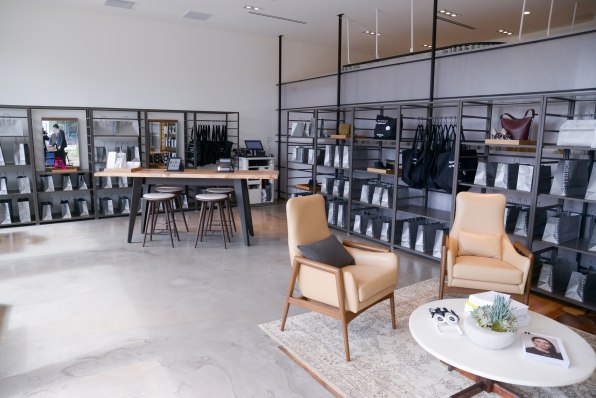
RETAIL HUB OF THE FUTURE?
Nordstrom Local looks and feels nothing like its traditional stores. The airy and sunny ivy-fronted West Hollywood location has service pockets at each corner of the showroom: The Trunk Club desk helps men order a new wardrobe or size a tux; a seamstress sits in front an artistic mural of various threads ready to make adjustments; and in the back, customers enjoy a mani or pedi alongside a stocked kitchen of expensive juices, beer, and wine.
The luxurious, large fitting rooms–with their thick, floor-length curtains and mid-century pastel furniture– are reminiscent of a bridal boutique (minus the frenzied wedding parties).
Some come in and enjoy a full day at Nordstrom Local, parking themselves at a large marble communal table to either work–or perhaps peruse Nordstrom.com. You’ll spot busy Angelenos in leisurewear dropping off online returns or broken, scuffed handbags and shoes awaiting mending in their respective bins. Some simply drive up to the back for curbside pickup.
During the holidays, pop-up services like gift wrapping or gift stations attempt to make the season a bit more tolerable.
It’s the store of your overscheduled dreams.
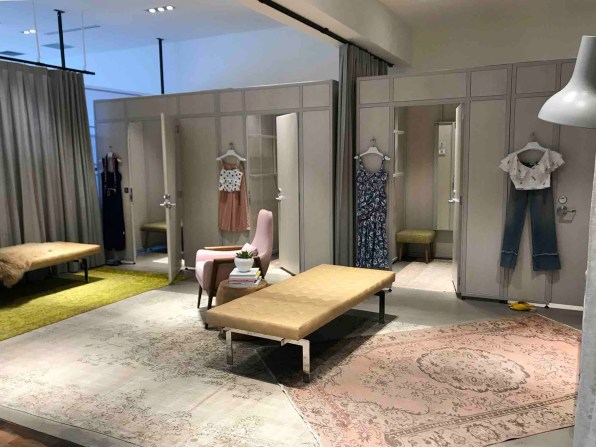
Within less than a day, the stylist emails you a “board” of curated designs, which will then wait for you in a dressing room at Nordstrom Local. (It’s the ideal styling situation for those of us who are too lazy–or grouchy–to deal with a real, live stylist.)
Should you want further expertise, a stylist will assist you in Nordstrom Local. Ideally, you build a relationship with your stylist, who is on standby whenever you need an outfit or alteration.
“This gives [customers] a unique opportunity to get the best of both worlds,” notes fashion and retail expert Bahar Takhtehchian. “They get this ability to buy things quickly online, and then they’re able to go in there to get more details and hands-on help.”
Style Board, in many ways, is the culmination of Nordstrom’s strengths: inventory, customer service, digital prowess, and convenience. Those same markers led the company to acquire Trunk Club, the online personal styling service, in 2014.
“Our local market strategy is reflective of that more often today, customers don’t see Nordstrom as a website or a store or a salesperson. They see Nordstrom as a combination of all three of those,” says Jensen. “Our ambition is to serve customers in the local markets where they live and work, really agnostic of channel store–digital or physical.”
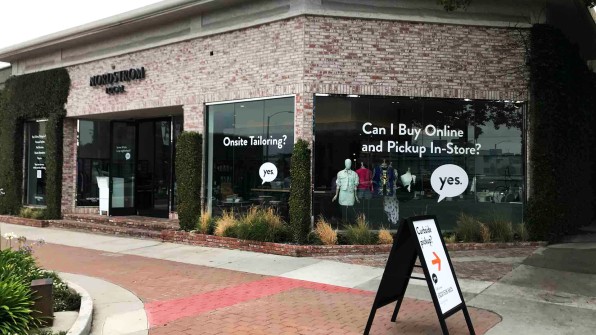
A HISTORY OF EXPERIMENTATION
The 117-year-old, Seattle-based retailer has been evolving the retail experience since its inception—sometimes to excess. At one point in the 1950s, the company featured caged monkeys in the children’s shoe department.
In 1998, it was one of the first fashion retailers to embrace e-commerce. In 2012, it invested and partnered with men’s clothing e-site Bonobos. In 2018, it acquired private flash sale site HauteLook.
Most recently, Nordstrom partnered with Anthropologie for in-store home collections and expanded its Reserve Online & Try In Storeservice across the country. The popular Nordstrom Rewards program, which covers all Nordstrom Local services, grew last year by 35% to 10.5 million, according to the company’s recent investor report. Sales from Nordstrom Rewards customers represented 51% of sales, an increase from 44% in 2016.
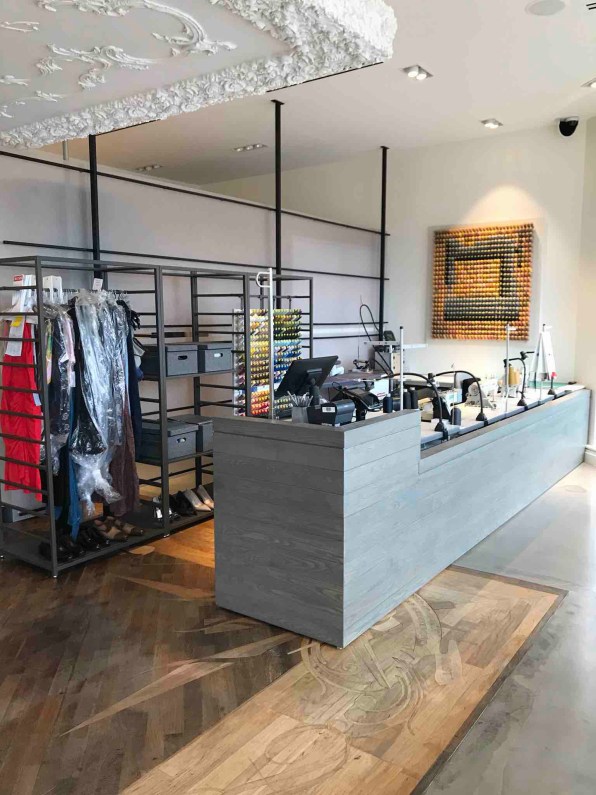
“Part of our DNA is always trying to find a way to create a better experience,” reflects Jamie Nordstrom, president of Nordstrom stores. For him, the appeal of the Local concept in his no. 1 customer market made sense: “Having lived in L.A. for a couple of years, you know it’s damn hard to get around that town.”
“We’re trying to improve our effectiveness of being a great retailer in every major market we do business in: Nordstrom Local is one component of that,” says Nordstrom.
Though still in its infancy, Nordstrom Local Melrose offers some insight as to what resonates with clients. Buy online/curbside pickup, tailoring, and drop-off returns are the most popular services. The latter is especially helpful for Nordstrom to quickly reinsert merchandise back into its e-commerce inventory. Beauty services, meanwhile, saw a threefold pickup following the introduction of pedicure stations.
“When we find ways to engage with customers, their engagement with us tends to go up across the board,” says Worzel. “Customers are interacting with us more. They’re spending more with us digitally through online experiences, but they’re also continuing to shop in our existing stores and they’re just adding Local as another point of experience with us.”
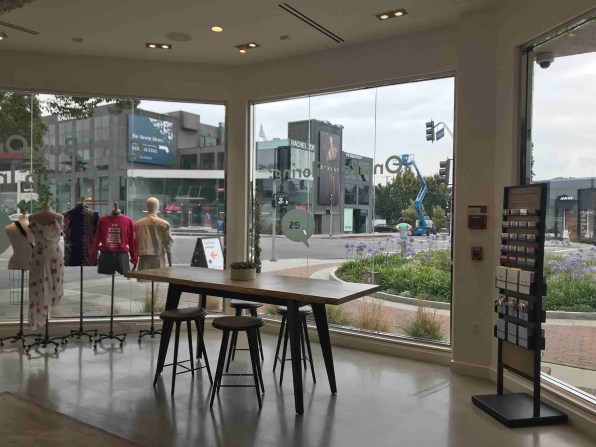
GETTING ENGAGED
Nordstrom Local seems to specifically appeal to clients who might not otherwise frequent a mall: millennials, the super busy, people who live in West Hollywood. Perhaps folks who potentially prefer browsing outfits while half-watching the news, then swinging by Local on their way home from work to pick up an online order. Or maybe it’s a busy mom who wants her nails done while imbibing her daily green juice as a salesperson demonstrates what would suit her best at an upcoming wedding.
According to a recent Forrester consumer research report, 66% of customers think that valuing their time is the most important element in delivering good customer service. “Time is a precious commodity for everybody,” says Worzel. “And so, when we make it easier for [customers] to discover product, engage with great product they’re looking for, but also with our people and our services on those terms, that’s a win for customers.”
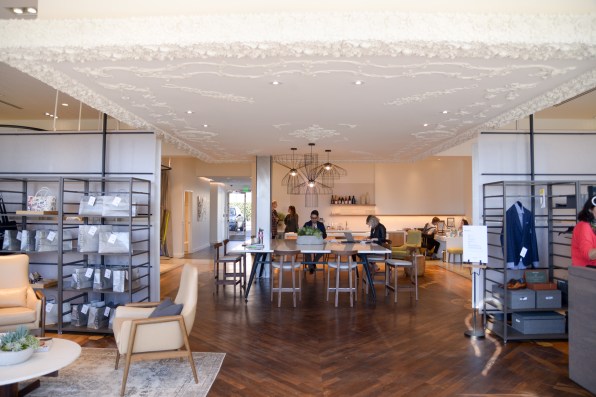
“You’re going to see us continue to just try stuff with customers, and some of it’s going to work, and some of it’s not going to work,” says Worzel, “but we think it’s super important to continue to innovate and not get stuck in an old model.”
